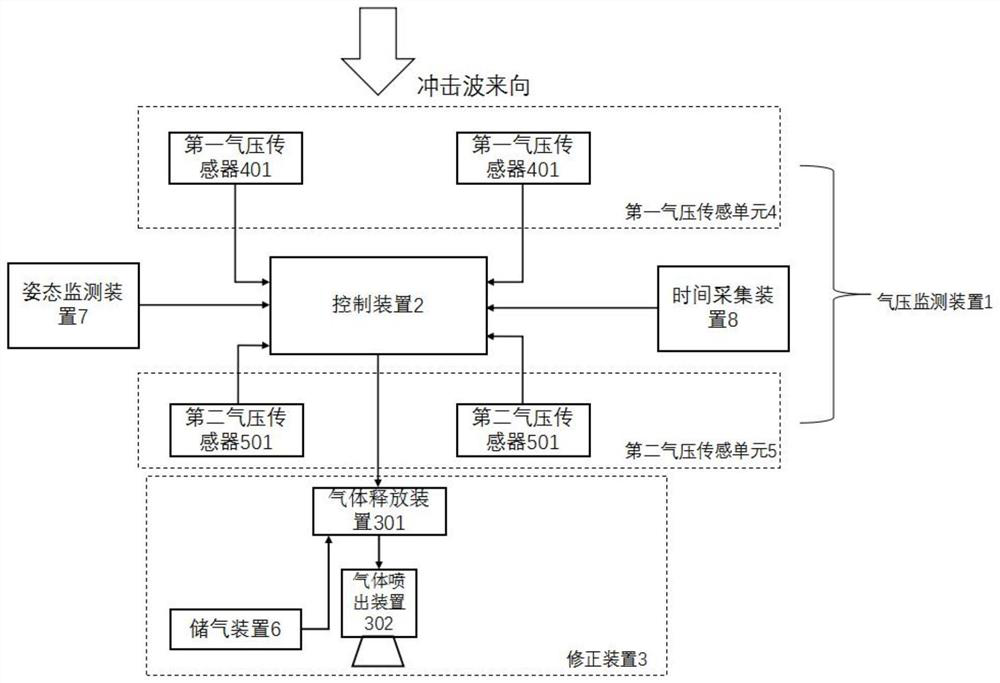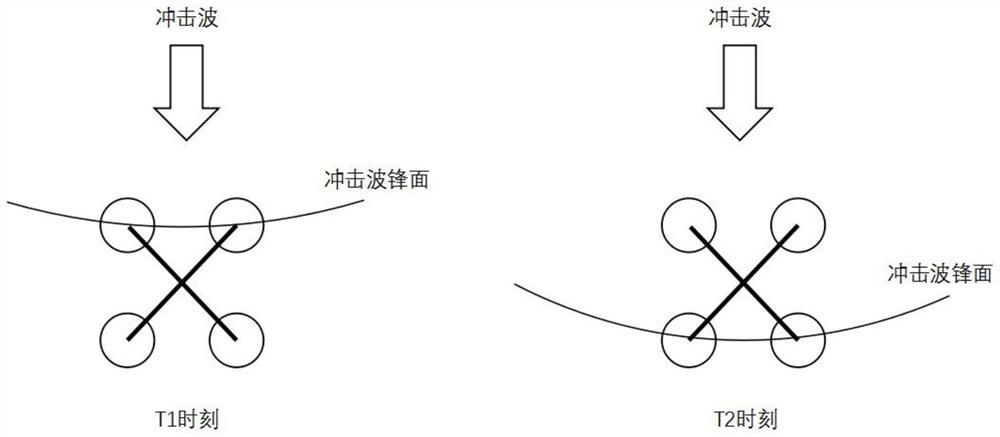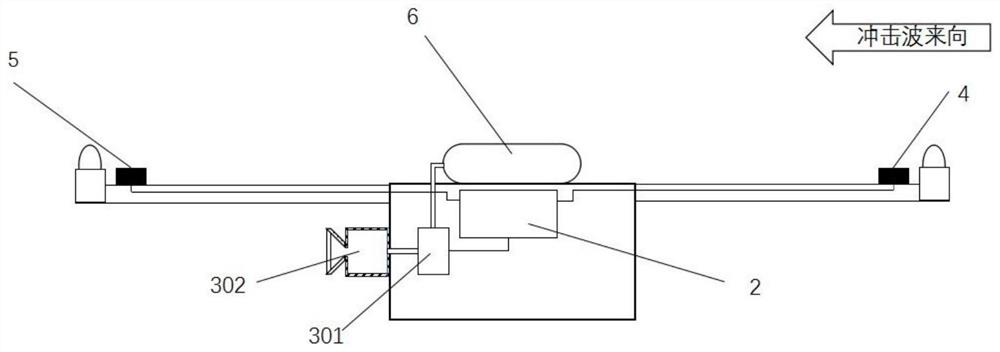Protection device applied to fire-fighting unmanned aerial vehicle and protection device control method
A technology for protection devices and unmanned aerial vehicles, which is applied to unmanned aircraft, motor vehicles, transportation and packaging, etc. It can solve the problems of unmanned aerial vehicles, loss of stability, loss of personnel and property, and elimination of disturbance moments, etc., and achieve structural Simplicity, short response time, and reduced impact effects
- Summary
- Abstract
- Description
- Claims
- Application Information
AI Technical Summary
Problems solved by technology
Method used
Image
Examples
Embodiment 1
[0051] A protective device applied to fire-fighting drones, such as figure 1 , 3 As shown, it includes an air pressure monitoring device 1, a control device 2 and a correction device 3; the air pressure monitoring device 1 is connected to the control device 2 with a signal, and the correction device 3 is connected to and controlled by the control device 2; the air pressure monitoring device 1 The air pressure data value of the environment where the UAV is located can be collected, the control device 2 receives the data value and judges the shock wave state that the UAV is currently facing according to the data value, and the control device 2 can control the correction device 3 to generate The reaction force against the shock wave. Specifically, it can effectively detect the state of the shock wave that the UAV is currently facing, and generate a reaction force relative to the shock wave through the correction device 3, assisting the UAV to maintain a stable attitude in the fa...
Embodiment 2
[0056] Embodiment 2 is a further improvement to Embodiment 1; further description, the same parts will not be repeated here, such as figure 1 , 2 As shown, a time acquisition device 8 is also included, and the time acquisition device 8 is connected to the control device 2 in signal; the time acquisition device 8 can collect the time T1 when the shock wave front reaches the first air pressure sensor 401, and the time T1 when the shock wave front reaches the second air pressure The time T2 of the sensor 501; the control device 2 obtains the time difference ΔT based on the time T1 when the shock wave front reaches the first air pressure sensor 401 and the time T2 when the shock wave front reaches the second air pressure sensor 501, and based on the pressure difference ΔP and the time difference ΔT Judge the shock wave status that the drone is currently facing. Specifically, by setting the time acquisition device 8, the accuracy of shock wave judgment is improved.
[0057] When ...
Embodiment 3
[0060] Embodiment 3 is a further improvement to Embodiment 1 and Embodiment 2; further description, the same parts will not be repeated here, such as figure 1 As shown, it also includes an attitude monitoring device 7, the attitude monitoring device 7 is connected with the control device 2 signal, the attitude signal of the drone is transmitted between the attitude monitoring device 7 and the control device 2, and the control device 2 is based on The data value of the air pressure of the environment where the drone is located and the attitude signal of the drone judge whether to close the correction device 3 .
[0061] Specifically, it is possible to close the correcting device 3 after ensuring that the attitude of the drone is normal.
PUM
 Login to View More
Login to View More Abstract
Description
Claims
Application Information
 Login to View More
Login to View More - R&D
- Intellectual Property
- Life Sciences
- Materials
- Tech Scout
- Unparalleled Data Quality
- Higher Quality Content
- 60% Fewer Hallucinations
Browse by: Latest US Patents, China's latest patents, Technical Efficacy Thesaurus, Application Domain, Technology Topic, Popular Technical Reports.
© 2025 PatSnap. All rights reserved.Legal|Privacy policy|Modern Slavery Act Transparency Statement|Sitemap|About US| Contact US: help@patsnap.com



